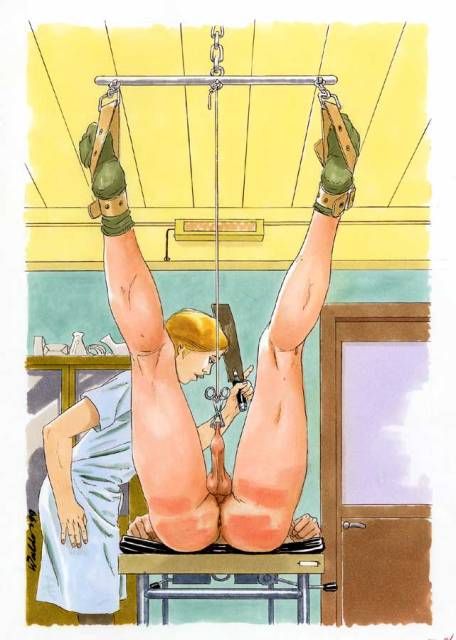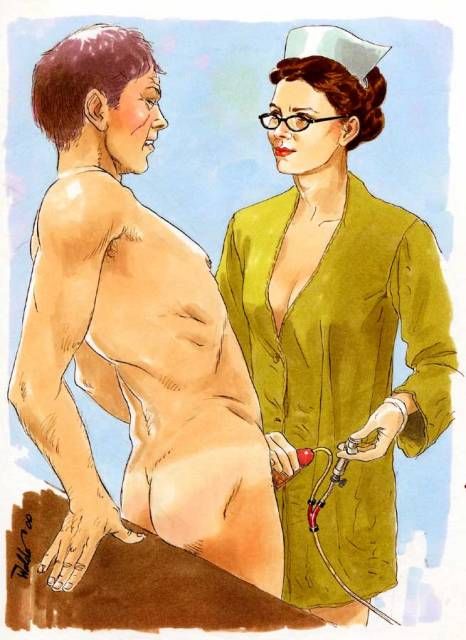The io9 site recently published an article discussing four fascinating papers on the subject of measuring pain. The studies in question were all done back in the 1940’s with the goal of coming up with a reliable and reproducible method for quantifying levels of pain. The scanned versions of papers can be read online: Paper 1 (1940), Paper 2 (1947), Paper 3 (1947) and Paper 4 (1948). They’re fairly readable and easy to understand, assuming you having a grounding in basic maths and science.
Pain in itself is a curious topic, as it’s such a uniquely subjective experience. We normally build understanding by shared references. Yet, if I tell someone my back hurts, how do we establish a common reference point? With external stimulus, like color or sound, we can measure the spectrum or the loudness irrespective of a person. Something like taste or smell is a little more complex, but there’s at least an external object (the food itself) to breakdown and analyze. It’s also possible in those cases to construct a common language from more primitive elements (sweet, bitter, salt, etc.) Just look at wine tasting notes for an example of that approach in action. But with pain? How do you measure something that’s completely internal, and can manifest at any point in the body, to a huge range of stimulus, or sometimes to no apparent stimulus at all?
The scientists behind these papers tackled the problem by proposing a scale for measuring pain, with a unit called the dol. They created it using controlled doses of heat on volunteers, and measuring when they could detect a difference between the heat intensity levels. They discovered that on average people could distinguish 21 levels of different intensity between nothing and maximum pain. This maximum wasn’t some safety limit set by the scientists. It turns out that there’s an upper limit on pain, a maximum beyond which increased intensity isn’t detected as greater pain. Working with this 0 to 21 detectable level changes, they assigned 1 dol =equals 2 levels, and created a 0 to 10.5 pain scale.
There’s all sorts of interesting bits of data in the papers. For example, mood and fatigue made no difference to the perception of pain, but gripping an iron bar tightly or hearing a very loud sound did. That fits the common intuition that being distracted from pain lessens it. They also showed that pain did not sum over an area. In other words, the intensity of the pain was purely related to the intensity of the heat energy applied, not the size of the area it was applied to. Initially that seems a little count-intuitive, but it does fit to the idea that being distracted can help reduce pain. One thing that can distract you is a different pain. That wouldn’t be true if pain was additive.
The most interesting finding is one that I think the io9 article misunderstands, or at least misrepresents. It says…
The study’s authors concluded that 8 dols of pain equaled four successive two dol experiences. This arithmetic aspect of the dol contrasted existing beliefs of the subjective nature of pain.
That seems to suggest some sort of progression in time, where you can reach very high pain levels by repeatedly applying a low pain stimulus. That’s not what the study found. What they discovered was that the scale is linear. So the increase in intensity between 1 and 2 dols, is perceived as the same increase in intensity when moving from 8 to 9 dols. I think most people would think of a pain scale like the Richter scale for measuring earthquakes. That’s a log scale, and so going from a magnitude 4 to 5 earthquake is basically nothing, where going from a magnitude 7 to 8 is huge. Similarly, you might expect that a 1 to 2 change in pain isn’t much, where going from 8 to 9 is very scary, but it’s actually perceived as the same change in intensity. This also means that the standard 0 to 10 scale doctors often use, where 0 is no pain and 10 is worst pain you can imagine, actually makes sense. There is an upper bound to pain and the scale between zero and that maximum value is a simple linear one.
The io9 article has a sense of ‘Wow, look what these crazy scientists used to be able to get away with.’ To me it didn’t seem that bad. As a masochist I may have a distorted view on this, but it’s only temporary pain. I suspect if they’d hired an attractive female doctor with an authoritative attitude to perform the tests, as in this artwork by Waldo, then they’d have been inundated with volunteers. Although that might have thrown their experimental results off. They claimed mood didn’t make a difference, but I doubt they also considered or induced sexual arousal.


paltego,
This really is a fascinating subject, one with so many possibilities. Just think of what could be done in the field of “pain management.”
Hi Suzanne,
Definitely a fascinating subject. I’m sure there must be more modern research on the subject, but I’ve not managed to track any down. Although having said that, after having had some issues with my lower back in the past, I’ve experienced a little of the modern tools for evaluating pain and haven’t been too impressed. This research in the 1940’s was designed to improve on the standard 0..10 scale, and that’s still the current standard AFAIK.
When I comes to pain management I do wonder if BDSM type pain could actually be of positive value. i.e. For people wired that way, substitute the bad pain with a good pain. That has the benefit of being both a distraction and releasing endorphins. I should research this further – maybe I could get a pro-domme on my health insurance 🙂
-paltego
I wish I was a test subject that but never come true